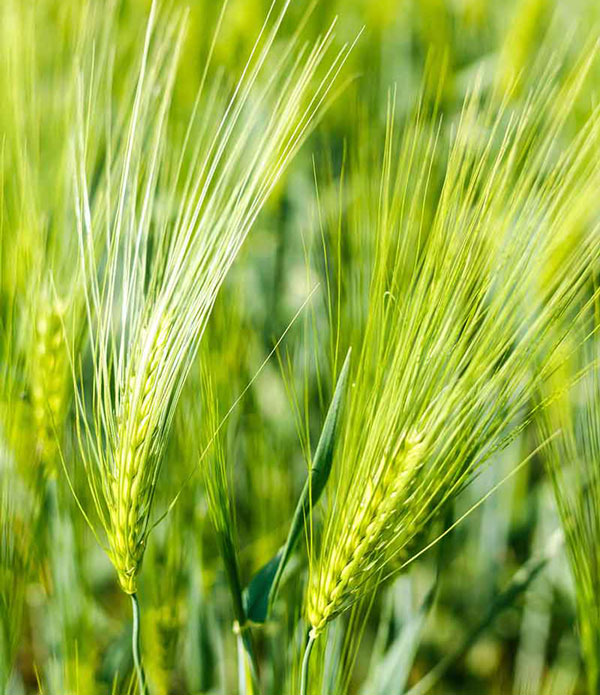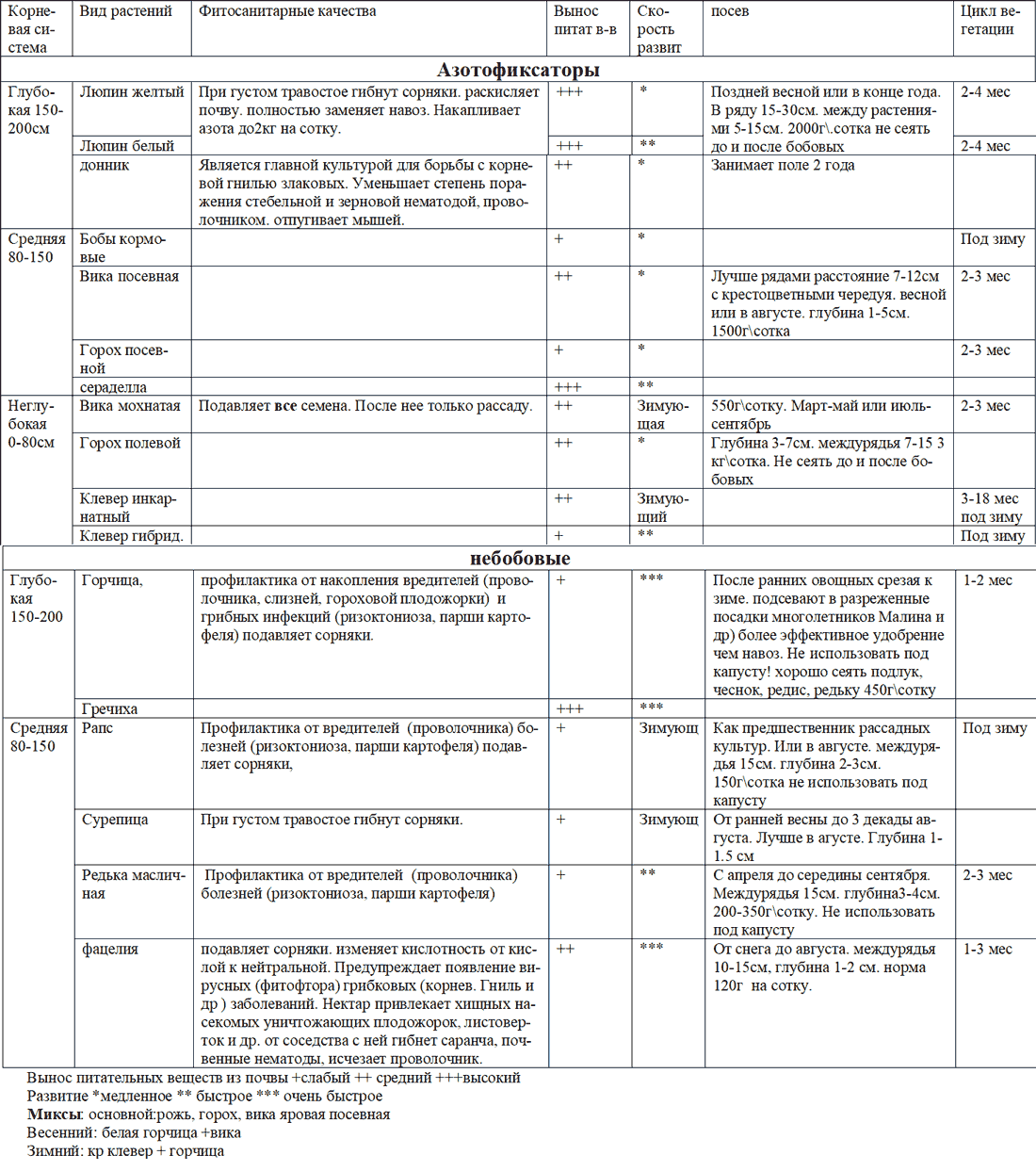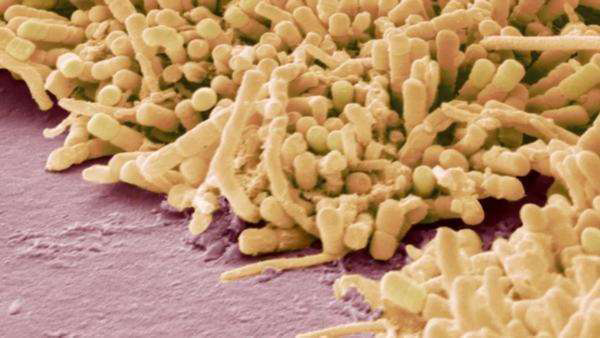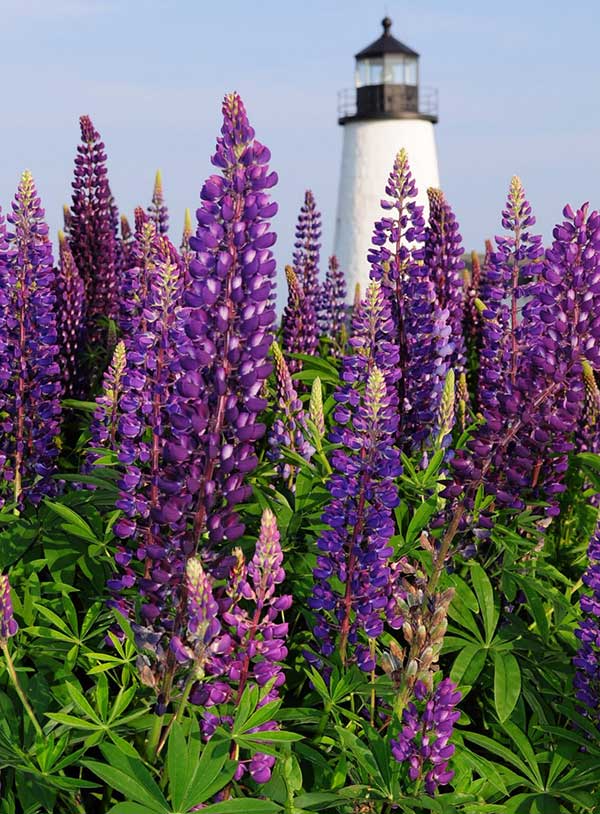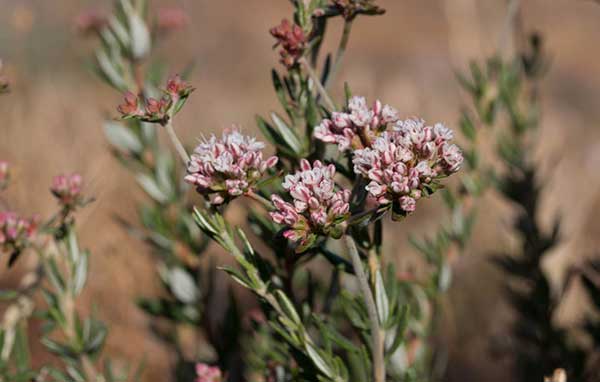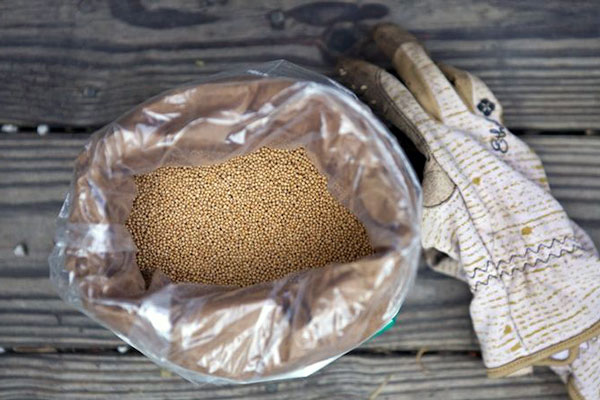You can grow cover crops on any plot and soil, even for the most inexperienced beginner gardeners and horticulturists. There are several methods for growing cover crops, so there’s no need to postpone sowing green fertilizers until spring—you can try one of the cover crop methods even “before winter.”
Crop Rotation
Cover crop rotation is practiced both in gardens and on fields. It typically starts in the fall with sowing winter cover crops. In the spring, a week or two before planting main crops, the cover crop is incorporated into the soil.
Some types of grasses can be mowed and left as mulch or added to compost. Some green fertilizers can be incorporated before planting crops, while others can be left to grow between rows and managed by mowing. Plants that are continuously weakened by mowing will die off, their roots will begin to decompose, and humus will form.
After harvesting a crop, you can grow cover crops with a short growing period or slower legumes in its place. By the time they start flowering or with the appearance of the first flowers, the cover crop is incorporated into the soil and winter or fast-growing salad greens are sown.
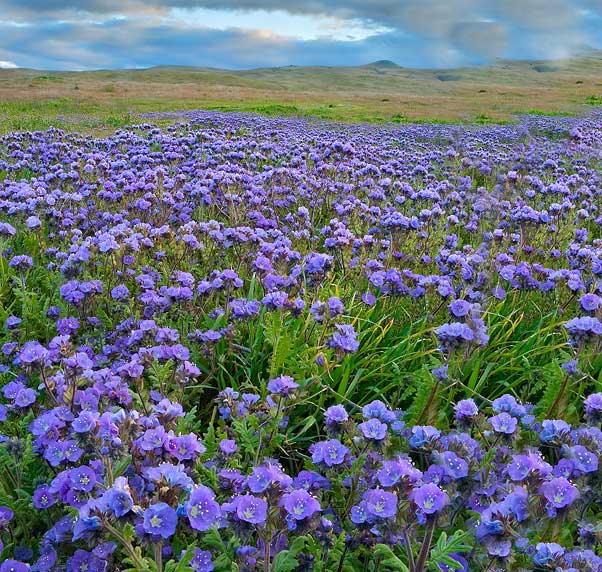 Phacelia - cover crop with a short growing period.
Phacelia - cover crop with a short growing period.
This is just one of many scenarios for implementing crop rotation with cover crops. Mustard can be grown from April until the first frosts, and grains and grasses can be alternated, sown in mixtures. For information on choosing the most effective green fertilizer, read here .
Dividing the Plot into Cover Crop/Culture Zones
Sow cover crops in some of the beds and alternate them with those used for main crops. Rotate fields based on the chosen green fertilizer and current needs. Perennial legumes work well for 2-3 years (up to 5 years), while mustard and phacelia can be sown and incorporated up to 5 times per season (depending on the climate), and the bed can be planted with fruit the following year.
Growing as Mulch or Compost
If nothing grows along your fence, it makes sense to sow cover crops for mulch or compost. Choose shade-tolerant green fertilizers and mow as needed. In strategically useless areas like hedgerows and under fruit trees, you can plant green fertilizers that attract beneficial predatory insects and bees for pollination of your garden. Weeds will not settle and multiply in these areas.
 Mowing and mulching between rows.
Mowing and mulching between rows.
Land Under Green Fallow, Resting, or Conservation
It is quite likely that I am not using the terms in the subtitle correctly, but together they convey one meaning—the land is left untouched for a period before fruit crops. In some cases, true soil formation is necessary, where the soil needs to be worked for several years before planned planting. Alternatively, if gardening is not currently planned, protection of the soil from wind and water erosion and weeds is needed. There are two possible options—covering with geotextiles (slates, cardboard, etc.) or sowing cover crops.
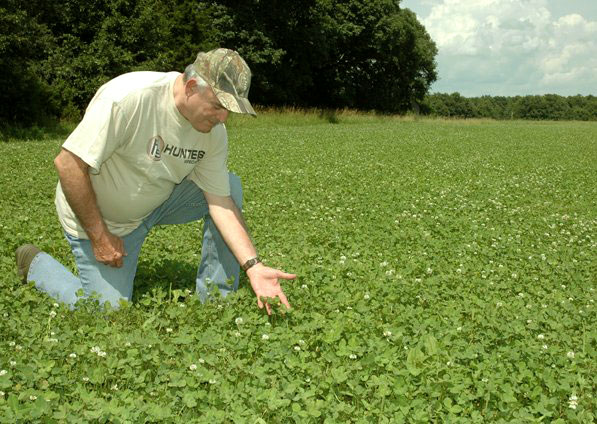 Land under 'green fallow' with white clover.
Land under 'green fallow' with white clover.
Sowing perennial legume cover crops, such as lupine or clover, is the best solution considering all benefits. Just mow the grasses before flowering to prevent self-seeding (on a small plot, my parents manually removed the flower stalks from mustard and added them to salads). If the plot is overgrown or virgin land—it’s worth mowing everything and covering it for a few months to let the weeds decompose. Then sow green fertilizers.
Tips for Beginners
How to grow cover crops (from Marianne Sarrantonio, Associate Professor of Agriculture at Cornell University):
- Don’t try more than five plant species per year. It’s good to test two cover crop species per season. Start with small plots, record the planting date, soil and weather conditions. For beginners, the best method is sowing after harvest, in still-loose, moist soil.
- For initial trials, buy a small amount of seeds, even if bulk is much cheaper.
- Work with small sowing areas. A hundred square meters is enough for adequate data.
- Approach testing different green fertilizers as carefully and thoughtfully as fruit crops. Prepare the soil, water, mow, and incorporate at recommended times to get an objective view of the new plant and its properties.
- Sow as evenly as possible, following the recommendations of “grams per hundred square meters.” If sowing by hand and using small seeds, an effective method is: measure half the seeds, mix them with sand, distribute half first, then go perpendicular and distribute the second half. Sowing less densely than recommended is a waste of money. The same applies to overly generous sowing.
- Record the results obtained. Document everything and don’t rely on memory. Note the cost of seeds, weight, sowing date and location, what grew on this field and what will grow after cover crops, applied fertilizers, herbicides, pesticides, plant height on specific days of growth, weather conditions, and anything else you consider important. Pay attention to everything that you think affects the result.
- For winter crops, it is important to record survival rates and germination.
- Growing cover crops is best with mineral fertilization. Everything they consume will return to the soil and gradually, through decomposition, nourish the crops, rather than being washed away by watering.
- Don’t expect all the benefits of green fertilizers to manifest in monetary savings. Some benefits are difficult to quantify in monetary terms.
- Ask neighbors what they prefer to sow. Someone on the neighboring plot may have gone through a long process of choosing the best cover crop and might share their experience.
- It’s useful to know the weight of green mass relative to growth and area. For example, measure one square meter of land, mow the green crop, and weigh it. Do this with each sample—this is how you can choose the most effective humus-forming crop (note that, regardless of weight, from crucifers and annual legumes, there will be little humus as they decompose quickly and contain less carbon than cereals. I will return to this topic in future articles). Observations made by eye are not effective.
In the next article, a detailed discussion on when to sow and when to harvest cover crops .
